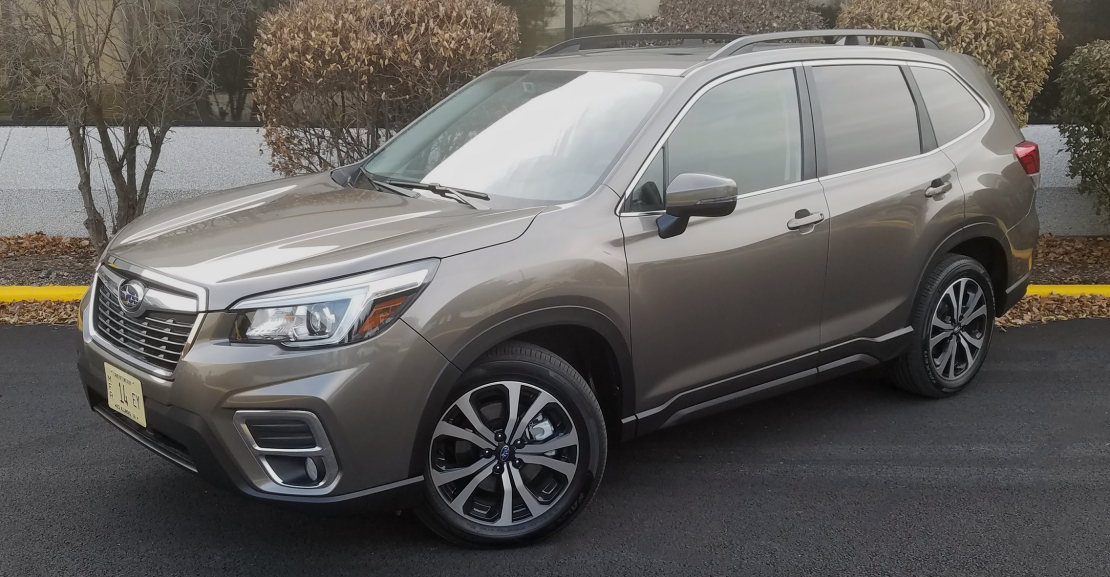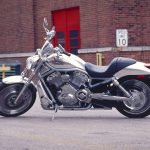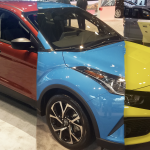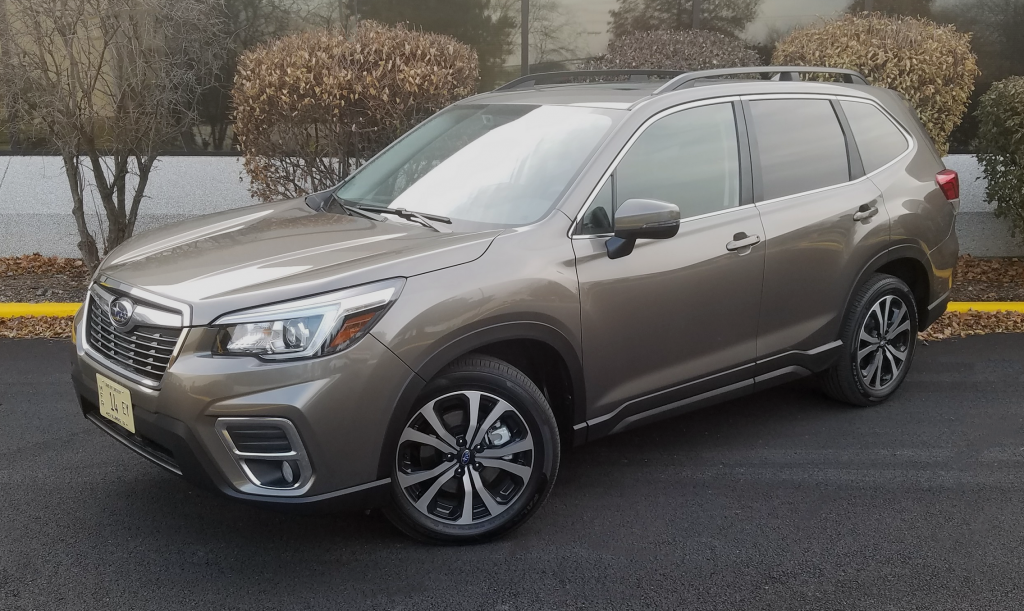
2019 Subaru Forester Limited
Class: Compact Crossover
Miles Driven: 547
Fuel Used: 22.6 gallons
Real-world fuel economy: 24.2 mpg
Driving mix: 50% city, 50% highway
EPA-estimated fuel economy: 26/33/29 (city, highway, combined)
| CG Report Card | |
|---|---|
| Room and Comfort | A |
| Power and Performance | B- |
| Fit and Finish | B+ |
| Fuel Economy | B+ |
| Value | B+ |
| Report-card grades are derived from a consensus of test-driver evaluations. All grades are versus other vehicles in the same class. Value grade is for specific trim level evaluated, and may not reflect Consumer Guide's impressions of the entire model lineup. | |
| Big & Tall Comfort | |
| Big Guy | A |
| Tall Guy | A |
| Big & Tall comfort ratings are for front seats only. "Big" rating based on male tester weighing approximately 350 pounds, "Tall" rating based on 6'6"-tall male tester. | |
Fuel type: Regular gasoline
Base price: $30,795 (not including $975 destination charge)
Options on test car: STARLINK navigation package with Harman Kardon audio, heated steering wheel and reverse automatic braking ($1695)
Price as tested: $33,465
Quick Hits
The great: Airy cabin boasts excellent passenger and cargo room within sensible exterior dimensions
The good: Good mix of passenger-car and SUV attributes
The not so good: Disappointing fuel economy compared to EPA estimates
More Forester price and availability information
John Biel
The Subaru Forester, which gets a full redesign for 2019, might be the quintessential compact-crossover sport-utility. It’s got clear-cut design and technology features for better-than-average potential off the pavement or in bad weather, while remaining convenient, comfortable, and easy to drive the rest of the time. It’s not too much of a car or too much of a truck.
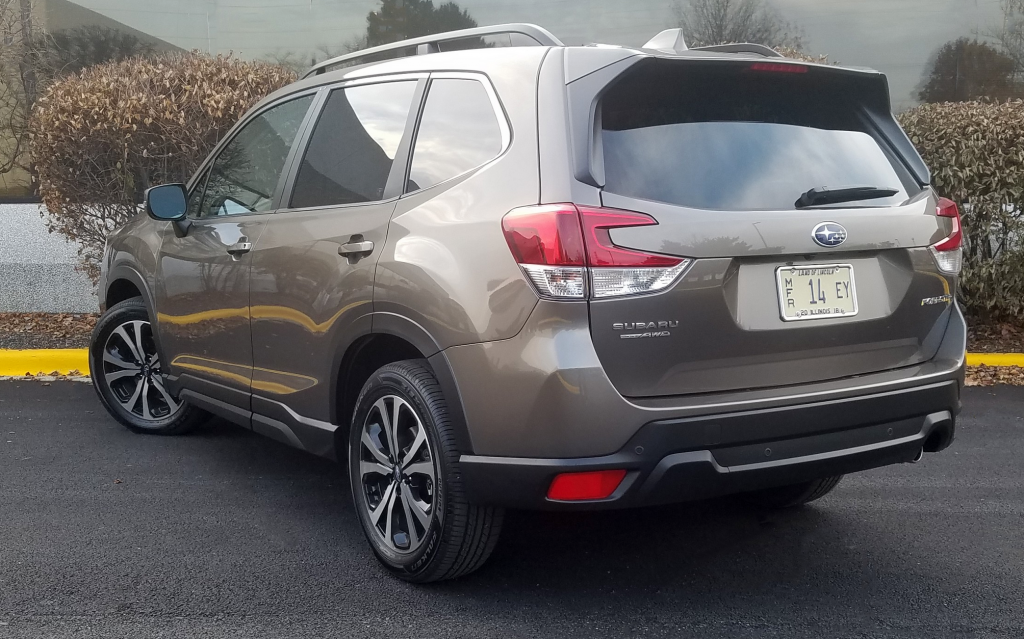
Utilizing Subaru’s Global Platform architecture that has been used for other product lines since 2017, the fifth-generation Forester is a bit bigger inside, which is good news if you’re people or cargo. There’s increased power from the carried-over standard engine, yet with the promise of a little better fuel economy. Subaru has also built up the capability of its X-Mode terrain-management system.
Consumer Guide editors sampled the new Forester Limited, which stands second from the top of five trim levels. Its $31,770 starting tab (including delivery) was pushed higher by an option package that set the total at $33,465.
First Spin: 2019 Subaru Forester
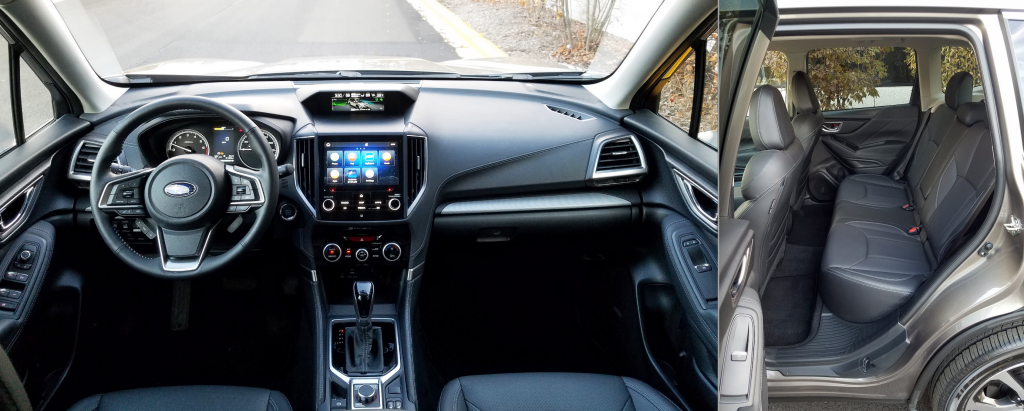
By the time a Forester rises to the Limited level it has accumulated lots of stuff. There is, of course, Subaru’s Symmetrical All-Wheel-Drive system, and with active torque vectoring. External features are steering-responsive LED headlights with high-beam assist, welcome lighting, 18-inch machine-finish alloy wheels, fog lights, heated side mirrors, panoramic moonroof, power liftgate with height-limit memory, body-color rear roof spoiler, black-finish roof rails, and black-finish lower-body “underguards.” The interior is bedecked with perforated-leather seats (heated in front), leather-wrapped steering wheel and shifter handle, keyless access and starting, and voice-activated dual-zone automatic climate control with rear-seat air-conditioning outlets built into the center console.
Test Drive: 2019 Subaru Ascent Touring
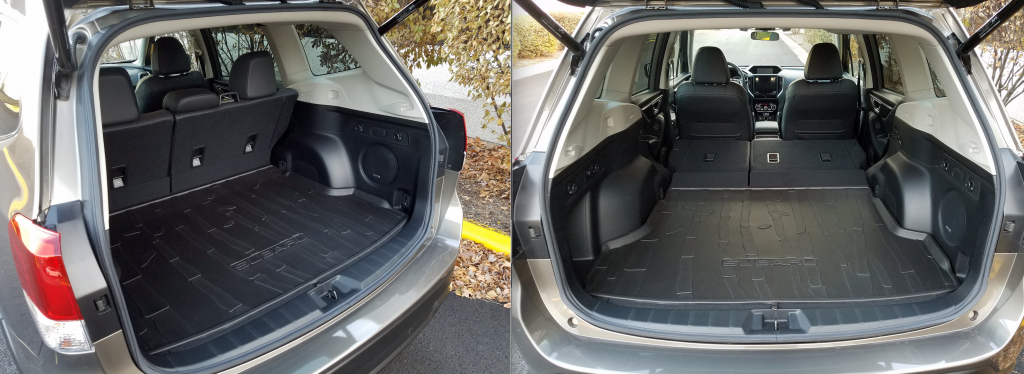
Infotainment is presented through a voice-activated Subaru Starlink system with an 8-inch touchscreen, AM/FM/CD player, satellite and HD radio, new Apple CarPlay/Android Auto smartphone integration, a raft of apps, and Bluetooth audio streaming and hands-free phone/ text-messaging connectivity. However, the option package added to the test car upped the ante with improved navigation, satellite-radio traffic information, near-field communication, and Harman Kardon premium audio. A Wi-Fi hotspot is a new feature in Foresters. For the sake of safety, there is the EyeSight suite of forward-collision warning and mitigation, lane-departure warning, lane-keep assist, adaptive cruise control, and Lead-Vehicle Start Alert (to remind you if the vehicle in front of you in traffic moves and you don’t). Blind-spot and rear-cross-traffic alerts are standard, and the option package adds reverse automatic braking. Trailer Stability Assist, another new feature, can brake individual wheels to stabilize both vehicle and trailer.
Test Drive: 2019 GMC Terrain SLT
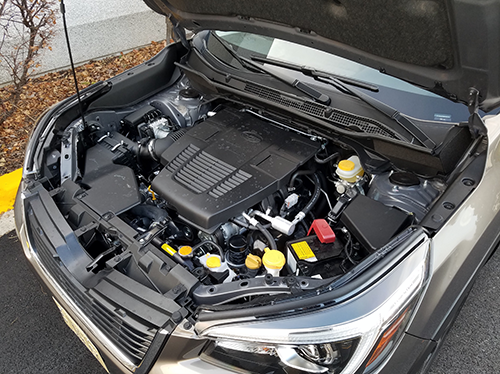
Subaru launches the new-generation Forester with a revised 2.5-liter “flat four” with horizontally opposed cylinders. Changes include a switch to direct injection, a higher compression ratio, and active control of the exhaust valves. The engine is now rated at 182 horsepower—12 more than previously—and 176 lb-ft of torque. It’s enough for perky around-town driving and quiet, competent highway running. Plus, the version of “Subaru Intelligent Drive” that’s standard in the Limited lets drivers choose from two powertrain-and-throttle-control modes, one of which spices things up somewhat. Power runs through a continuously variable transmission that is not quite the performance-neutering killjoy that some such devices can be.
The EPA rates the ’19 Forester at 26 mpg in the city, 33 on the highway, and 29 combined—which represents a pick-up of one mpg in highway and combined estimates. This driver averaged 25.4 mpg after 196 miles with 45 percent city-style operation; a later run—199 miles, 60 percent city—returned 23.5 mpg. A gas-saving automatic stop/start function is new to the Forester, but engagement is noisy, rough, and a tad slow. Drivers willing to trade nth-degree fuel economy for a little peace and quiet will probably switch it off.
Perhaps even more enjoyable is the fine balance of ride and handling. Urban street cracks and expressway pavement joints had a tough time rattling the structure or defeating the damping in the fully independent suspension. There’s a little bit of lean in cornering. Steering is fairly direct, keeping up well with driver inputs even if it could use a little more feedback. Every model above the base job comes with console-set X-Mode, now with Snow/Dirt and Deep Snow/Mud settings that adjust powertrain performance and vehicle dynamics to improve traction in these conditions. This tester selected Snow/Dirt when getting away from home on a morning when his street was covered in thick, wet snow and the Forester didn’t seem to miss a beat. X-Mode also incorporates hill-descent control.
Wheelbase grows by 1.2 inches for 2019, and the rear seat gets the full benefit of that stretch. Legroom is very good in either row. The same can be said for headroom. Front and rear outboard seats are comfortable, and three adults could snugly fit across the second row. Even with 8.7 inches of ground clearance, entry and exit is easy. Glass area is expansive, and windshield and door pillars are fairly narrow, so driver vision is excellent except to the extreme rear corners, where the bodywork rises and cuts into the view.
Soft surfaces are easy to find around the Forester Limited cabin, but the overall effect stops short of luxurious. Speedometer, tachometer, and driver-information displays are bright and legible. The audio system is easy to set up and use. The climate controls consist of handy dials to set temperature and fan speed, with just four buttons for other functions.
Test Drive: 2019 Nissan Rogue SV
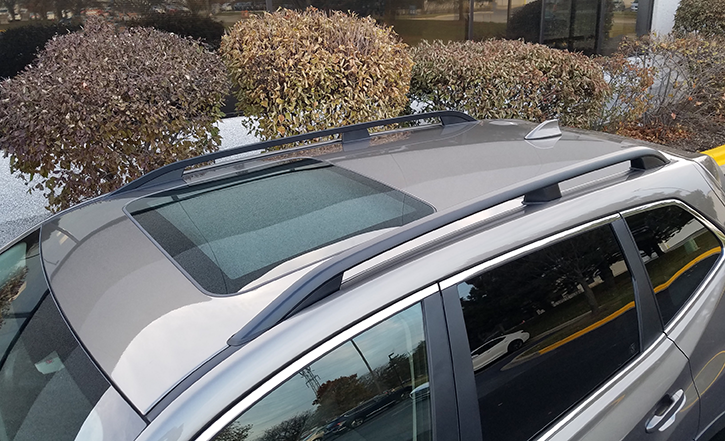
For interior storage there’s an acceptably sized glove box and a nicely shaped covered console box. The console cubby comes with a small-item organizer, but it has to be removed to expose the main storage space. At the front of the console is an open space with device inputs. Big pockets rest in the front door panels. Double-row pouches are attached to the backs of the front seats. Open cup holders reside in the console and pull-down rear armrest, and all four doors have spaces for bottles.
Cargo loads on a spacious flat floor through an opening that is 5.3 inches wider than in the previous Forester. Overall cargo space is greater, too. When the 60/40-split rear seats are folded, the ’19 model holds 76.1 cubic feet, a gain of 1.4 cubic feet. The lowered seats pitch up a little from the cargo floor, but a cover panel provides an uninterrupted surface.
The previous-generation Forester ended its run as a healthy seller. Its successor seems improvement enough to maintain that momentum.
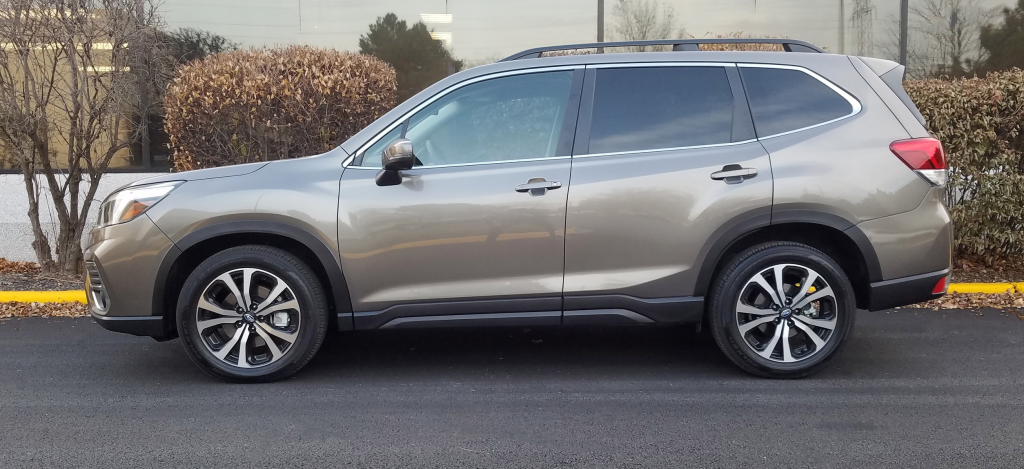
Test Drive: 2018 Jeep Compass Latitude
2019 Subaru Forester Limited

